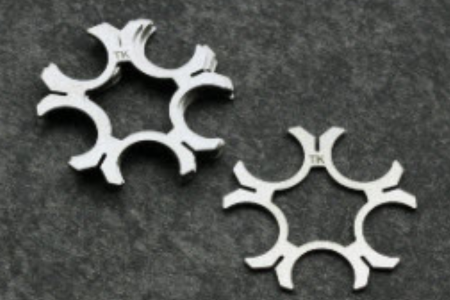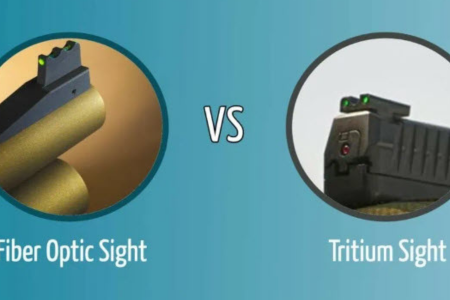Disclaimer. Dakota Firearms has the utmost support and respect for our phenomenal military and law enforcement, and this article is in no way a slight on what they do for our protections.
The majority of gun trainers come from one of four backgrounds: military service, law enforcement, competitive shooting, and everyday Joe. Three out of the four backgrounds generally do NOT make good gun trainers, with explanations to follow as to why not.
Military Service
We’ll begin with ex-military members training on gun use. These guys are coming out of the field with massive amounts of experience. Unfortunately, this enormous experience is not practical in the U.S. civilian self-defense world.
First, the soldier is almost always armed with a long gun. He may have a sidearm strapped to his thigh, but that is his backup weapon, not his primary weapon. Civilians away from their home generally have one handgun, and only a handgun, and maybe one extra magazine.
Second, the soldier works in teams, each with long guns, with each member having the others’ “six”. Each member of the team has specific duties and responsibilities. The soldier may even be covered by sniper fire. Civilians don’t have that luxury of team protection, synergy and cover fire. The best civilians can hope for is for two concealed carry buddies, having just completed some range time together decide to go out for a celebratory beer only to witness and stop an armed robbery inside the bar…a one in a million chance.
Third, the soldier is radioed up. If needed, after he makes contact with the enemy, he can radio for backup, whether it’s additional boots on the ground or an airstrike. Civilians aren’t that fortunate. Believe you me, there are times when I would love to call in an A-10 strike on the guy on the highway in front of me who just cut me off. But I cannot radio my gun-carrying buddies and have them assist me in the same amount of time a soldier’s platoon can come to his aid.
Fourth, and most importantly with ex-military trainers, there are two factors which separate the military world from the armed citizen world. The first factor is that the soldier understands and accepts the concept of “acceptable casualties”. In planning any military operation, planners figure in casualties from enemy action, equipment failures and simple bad luck. They plan for things to go wrong. They plan for casualties and start with enough men so that if some are lost, the mission is still a success. That will never fly in the civilian world. In our world, acceptable casualties are ZERO! If your plan for stopping a violent attack includes losing some of your children while the rest survive, I’m pretty sure mom will not go for the plan.
The second of the two factors with ex-military is that the solider understands and accepts the concept of “collateral damage”. This is injury or death of uninvolved combatants. In war this is inevitable and unavoidable. However, this is a no-go in the civilian world. The acceptable percentage of non-involved innocent bystanders is ZERO! If you stop a violent attack but accidentally shoot nearby granny meandering along with her walker, you failed!
And finally, fifth, in Special Operations engagements, the use of firearms is almost always OFFENSIVE, not DEFENSIVE. In the civilian world, to go on the offensive will get you in big legal trouble. In the civilian world, the word “aggressor” is a synonym for “defendant”! And any training you receive will follow you into both criminal and civil court. It will be very easy for a zealous prosecutor to show how you went on the attack because of your training.
Law Enforcement
The next group of trainers are law enforcement officers. These guys have a lot of experience managing chaos and investigating violent crimes. So, they know what interpersonal violence looks like.
First, their job is to seek out, confront and arrest very bad people for doing very bad things. They must press forward in the face of armed resistance. This is NOT what the civilian should be doing. Civilians, to the extent possible, should avoid, deter, de-escalate, and evade a confrontation. Pulling out a gun is the absolute last resort, not the first, as is often what must be done by law enforcement.
Second, keep in mind what the officer has at his disposal. He has a full-size service weapon with a large magazine and plenty of spares. He also has body armor, often an armed and trained partner, a long gun in his car’s trunk and a radio to call in his buddies or the K9 unit. The civilian does not have any of that. The most a civilian can hope for is an extra magazine. And, a civilian’s cell phone is worthless because the first time a civilian will be able to use it is after the attack is over, when 911 is called. And then it is too late, because the average police response time in major American cities is 11 minutes! With that type of delay, the responding officers are no help in the violent attack, and all they can do is take a report about it.
Third, the majority of the officer-involved shootings occur to uniformed officers, the beat cop, which is a whole different world than the one civilians live in. Contrary to what you see on TV and in the movies, SWAT team members rarely get shot. Their job is to secure the scene, get the suspect and take him safely into custody. Detectives also rarely get shot. They are hardly ever involved in shootouts, with most looking for evidence to build a case, after the uniformed officers secured the scene. Thus, for the uniformed officer, wearing a law enforcement uniform is akin to wearing a target on their back. Civilians are supposed to carry concealed, with the operative word being “concealed”. Civilians are supposed to be incognito, not announce to all the bad guys that they have a gun.
Additionally, most uniformed officer-involved shootings occur during one of three activities: traffic stops, seedy bars and domestic violence.
A cop may pull over a car for a running a stop sign and enter into a firefight not knowing the suspect has a handgun on the passenger seat, a kilo of coke in the trunk, and warrants for previous arrests. And many of these traffic stops happen after midnight. There is absolutely no reason for a civilian to be stopping a vehicle for running a stop sign, especially after midnight.
Officers have to go into seedy bars all the time to issue arrest warrants for drug possession, prostitution, parolees, drug enforcement, etc. Why as a civilian, would you need go into a seedy bar? Cheap booze? Cheap hookers? Drug fix?
The last action is that of domestic violence. Officers regularly have to go into homes where many of the combatants are drunk and fighting. Why the hell would you, as a civilian, want to get mixed up in another couples’ marital affairs while they are drunk and fighting?
And finally, fifth, law enforcement officers have a distorted view of engagement distance. As part of their job, they have to arrest suspects. At some point they have to put their hands on the suspect to cuff him. This is the last chance for the suspect to escape, so this moment of physical contact is the most dangerous for the officer. Most police officer attacks occur from a distance of zero to five feet. As civilians, we never want to get that close to an attacker.
Competitive Shooters
And then there are the trainers who have a competitive shooting background. They can teach you everything you need to know about fast, accurate shooting. If you want to hone these skills, by all means seek them out. But understand what goes on in the world of competitive shooting.
First, since speed and accuracy is everything, where fractions of seconds are the difference between winning and not winning, these guys, when not drawing from their holster, are always pointing their gun down range in order to shave seconds off their time. In some of these events, these shooters lose points if they shoot non-combatant targets, but not for pointing their muzzle at them. If you, as a civilian, walked around pointing your gun’s muzzle at people, you will be arrested for Reckless Endangerment or Aggravated Assault. Even if you are acquitted, you still lose. Attorneys, bail bondsmen and others are not free.
Second, another issue with competitive shooters is that they use highly specialized guns and holsters, models which the average civilian will not use for concealed carry. These holsters are not concealed, nor do they have to be. Yes, you can walk around without concealment, as Pennsylvania is an “open carry” state. But what benefit does that give you except to piss off a liberal walking past you.
And finally, third, competitive shooters are preoccupied with inconsequential periods of time…fractions of a second. Civilian shooters, on the other hand, use techniques which are not as fast, but which work on a broad variety of attack situations. Civilians train to accurately and safely draw from their holster, line up the gun sights, etc., all in a technique which allows them to do this while under stress. The only stress competitive shooters have is being able to accurately and quickly hit their target. They don’t have the stress of possibly taking a life.
Average Joes
So, it comes down to average Joe civilians as the best trainers. Why? Civilian trainers are YOU…or were you before being trained themselves. We, and I am you, hold everyday jobs…accountants, plumbers, salesmen, beauty salon owners. We are not skilled in tactics and equipment as the other trainer types. We are skilled in tactics and equipment which saves lives through proper gun handling. We take gun ownership seriously and understand the lethality strapped to our hip. We know that drawing a gun is the absolute last resort…as a defensive option, never an offensive one. And since we are you, we know that civilian gun owners are going to be held to a higher standard with the justice system. We understand that in order to exercise our 2nd Amendment right, we are going to be fighting an uphill battle against bleeding heart liberals who want to abolish that right, so we must do it better and do it cleaner…CONSTANTLY. We understand the legal system is not in our favor, and have to continuously work to stay ahead of the law, especially with overzealous prosecutors who would love set an example of us.
So, when seeking out your trainer, consider the background of the trainer.



